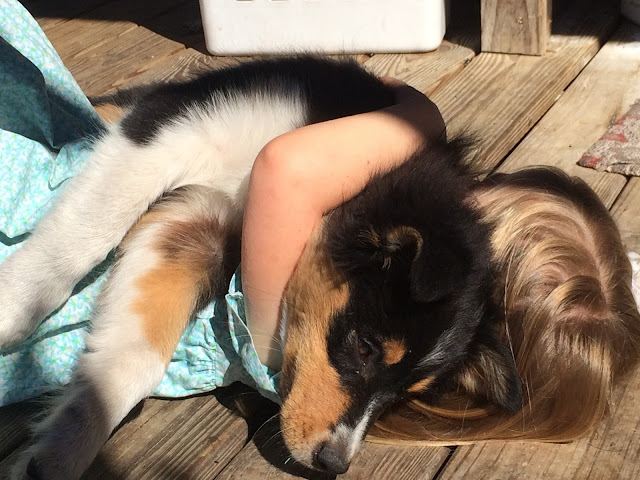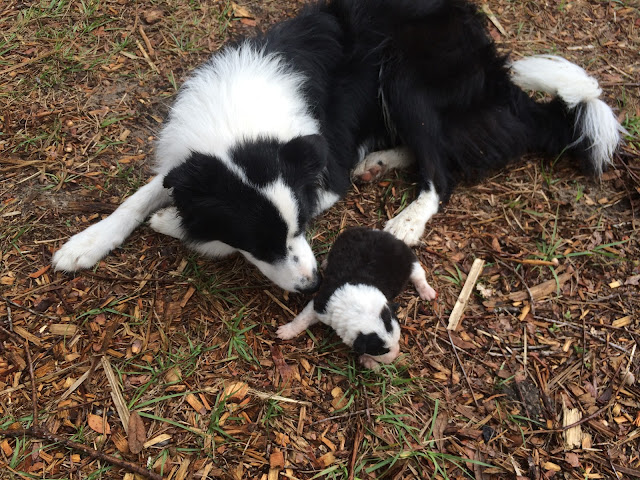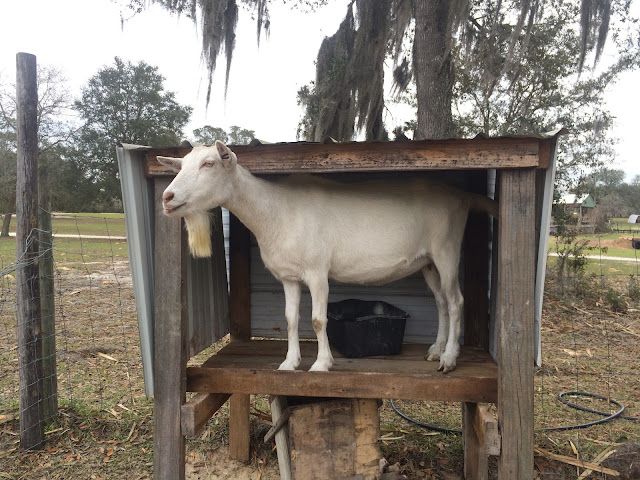For those who are interested, here is a pictorial, high-speed description of the month of February.
I got to experience what having a pack of four high-energy dogs is like when I "puppysat" a couple of my sister-in-law's Aussies.
(They are great dogs! palacepupsaussies.weebly.com)
 |
| Anna-Frances enjoyed it too. |
Frankie loves to wear this colander...
We decided to sell Pansy, due to our old enemy, lack of grass.
(Asking $1,700)
A picture of Fenella's sire... I think he becomes more beautiful every year!
(Contact me if you are interested in using him for stud, and I will put you in contact with the owner.)
We are planning to keep Bayberry - yay!
Waiting for Buttercup to calve..
And it's another heifer: Hurrah!
But we must sell her. :(
$1,500
Buttercup is always willing to give a milking lesson...
Cleone discovered that mulch is a cool, damp place to take a siesta in...
 |
| "What on earth is that?" |
And began learning about puppies...
 |
| "I love it!" |
And now she is Flossy's best friend.
I had the privilege of spending a day over at Shepherd's Hill Farm, in Lake City. It was a lot of fun spending time with our friends and church family up there!
Bottle feeding Flossy... This will be the best socialized dog on the planet!
Flossy's markings betray her parentage...
The dogs take a refresher course in leaving chicks alone.
Frieda decided that she likes to sleep on the hay bale... But the cows don't want to eat her bed after she's slept in it for a while, so I need to figure out a way to cure her of this lovely habit.
Anna-Frances is always game to try new things; especially if it's difficult and she is too young for the job! She actually did a very good job flipping and removing pancakes from the griddle, even though she's only three!
I decided to start selling one of my favorite skirts: the Paneled Riding Skirt
Liberty took singing lessons...
Emaline learned to milk (video).
Duncan and Flossy got baths on the same day.
I did not cry over spilt milk... I fed it to the dogs!
Our plum trees finally blossomed!
Frankie watered the garden...
and himself!
One happy little singin' cowpoke...
I borrowed a tiny Nigerian buck to breed my big Saanen doe. Hopefully it worked!
And we finally cross fenced part of the front pasture. Yippee!
I had lots of help from Bo, William and Justice.
Justice checked the height of the posts and leveled all of them.
Stretching the fence.
Russell desperately wanted to hammer in a t-post, so I got one down to his level and let him pound it. He took it very seriously!
"My humans call this a mineral feeder, but it's really my hotel room while I'm banished from the front pasture..."
Swiss chard, carrots and turnips from the garden. Yum!
Pasture raised broilers. (Yum!) :)
That's it for now! Come back later!






































Comments
Post a Comment
Hi there! I love it when you leave comments on my posts, but they will be moderated since this is a public blog and I do not know who will be reading it. I request that only decent, ordinary English be used in comments, as I do not really understand other languages, and do not wish to read slang or strong language.
"Let no unclean communication proceed out of your mouth" Eph. 4:29
Feel free to ask questions, and I will answer them to the best of my ability, and post the questions and answers on here to be a help to others.
Thank you! I am looking forward to hearing from my readers!